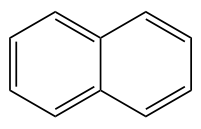Here are the essential concepts you must grasp in order to answer the question correctly.
Resonance Structures
Resonance structures are different ways of drawing the same molecule that illustrate the delocalization of electrons. In benzene, the electrons in the carbon-carbon bonds are not fixed in one position but are spread out over the entire ring, leading to equivalent structures. This concept helps explain the stability and unique properties of benzene compared to alkenes.
Recommended video:
Bond Length and Strength
In chemistry, bond length refers to the distance between the nuclei of two bonded atoms, while bond strength indicates the energy required to break that bond. In benzene, all carbon-carbon bonds are of equal length and strength, which is intermediate between single (longer, weaker) and double (shorter, stronger) bonds due to resonance, resulting in a stable structure.
Recommended video:
Hybridization
Hybridization is the concept of mixing atomic orbitals to form new hybrid orbitals that can accommodate bonding. In benzene, the carbon atoms are sp² hybridized, which allows for the formation of three sigma bonds and one unhybridized p orbital. This p orbital participates in the delocalized pi bonding that characterizes the resonance in benzene.
Recommended video:




